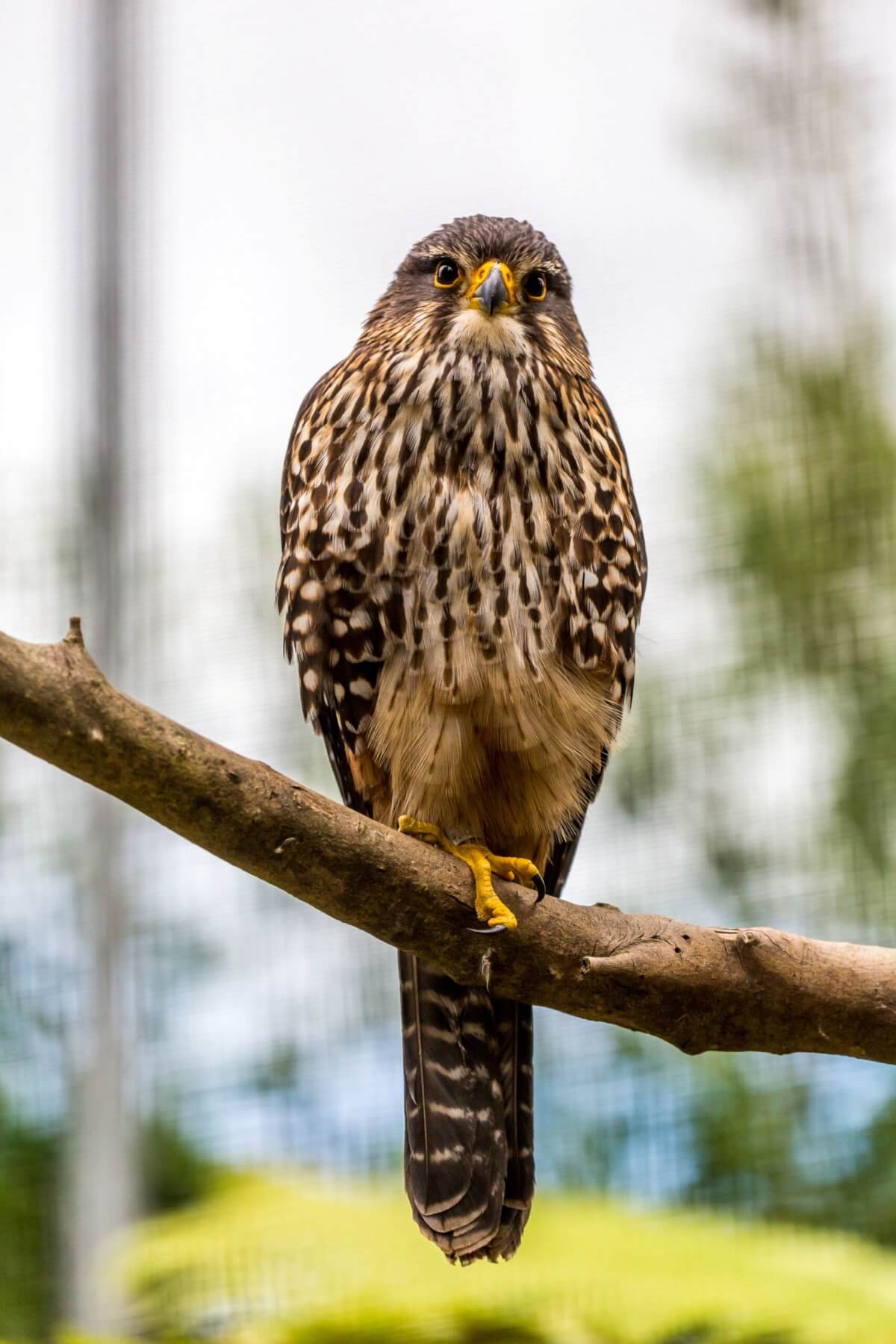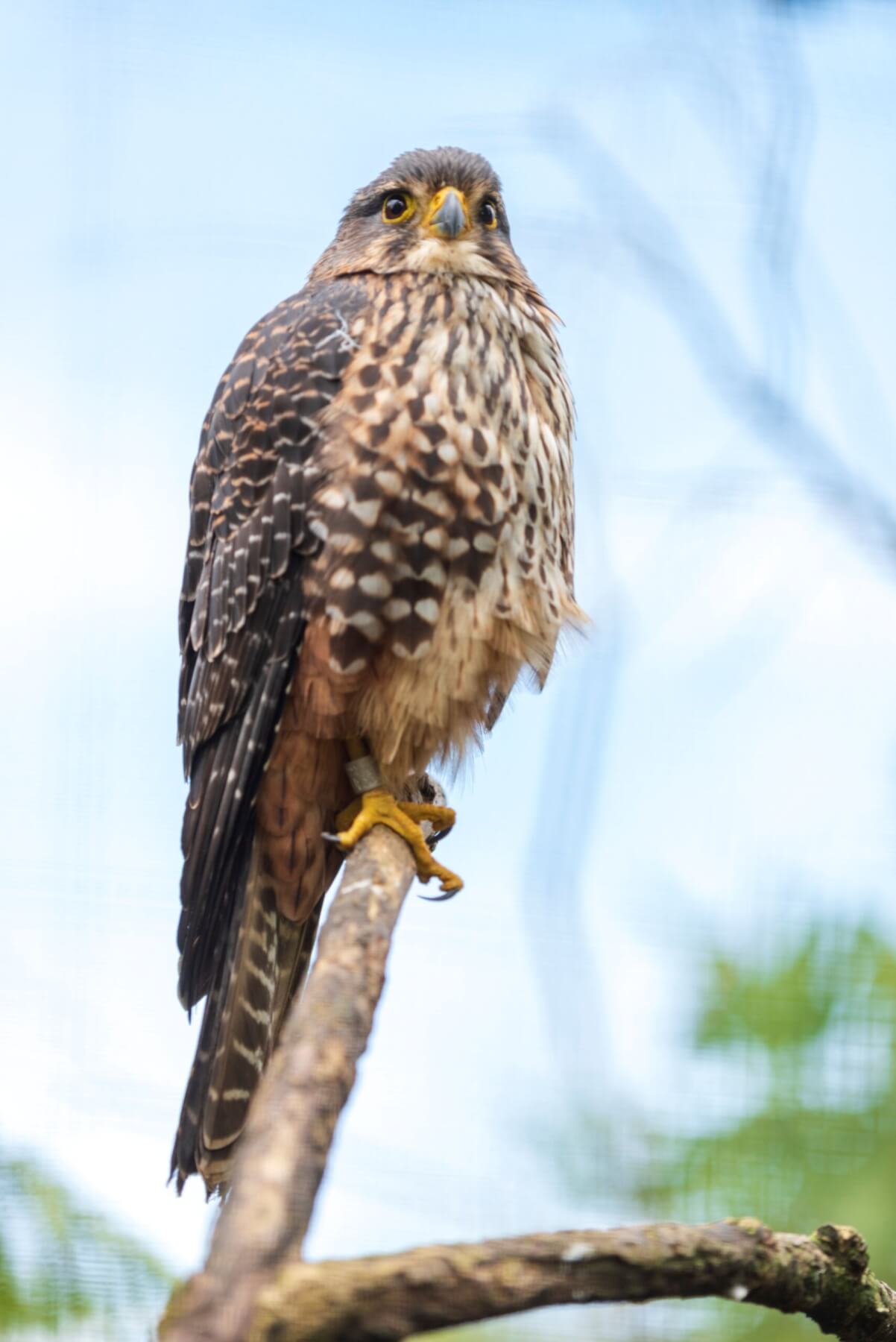
Kārearea
New Zealand’s latest “bird of the year” is not a common sight in our skies – but they can be seen at Sanctuary Mountain Maungatautari and the Ōtorohanga Kiwi House.

Kārearea
The kārearea (pictured right) – New Zealand’s only falcon – pipped the kea and karure or black robin to the 2025 title.
And readers might not have seen them in the flesh – but they have been in wallets since the second set of New Zealand decimal bank notes were issued in 1992. The kārearea is on the $20 note.
“You have five votes in Bird of the Year and the kārearea was definitely in my top five,” Tori Budd from Waipā’s Sanctuary Mountain Maungatautari told The News.
Although not endangered, the bird is classified as threatened.
“There are enough birds so that the population is relatively safe, but they’re still at risk due to population declines from predation and loss of habitat, for example,” Budd said.
“We don’t know their exact numbers [at Maungatautari] because they reintroduced themselves – they found their own way here. They’re now happily breeding and regularly seen by staff, visitors and volunteers.”
Nearby Ōtorohanga Kiwi House has a pair of kārearea in residence.
The kārearea, our native owl the ruru and the kāhu – the commonly seen harrier hawk – and the introduced barn owl are classed as New Zealand’s four birds of prey. The barn owl qualifies because it was not deliberately introduced.
The kārearea plays a role in pest control, feasting on such introduced quarry as rodents, sparrows, pigeons, ducks and rodents – though its diet before those pests were introduced was native species.
A high-speed hunter, it is capable of reaching speeds of 200 kilometres an hour when diving.
In its 20th year, the bird of the year poll has again helped raise awareness of the need to protect native species, Forest and Bird’s chief executive Nicola Toki said.
“Habitat destruction, climate change and introduced predators continue to push many species towards extinction – but public awareness can be powerful,” she said.
“People fall in love with these birds and once they know their stories, they care, they advocate and they act.”

Kārearea








